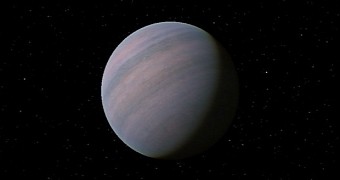At a distance of just 22 light-years from Earth, a habitable planet not very different to our own is likely orbiting a star dubbed Gliese 581, astronomers with the Queen Mary University of London in the UK argue in a recent paper in the journal Science.
This planet is sending out signals that the Queen Mary University of London scientists say were mistakenly interpreted as stellar outbursts in a study published back in 2014.
Now you see it, now you don't
The Earth-like planet that astronomers now claim is lurking just 22 light-years away from us was first discovered back in 2009 around the star Gliese 581 by astronomers armed with a spectrometer.
The scientific instrument was used to measure fluctuations in the light emitted by Gliese 581. Based on the variations they documented, the scientists who worked on this research project concluded that a planet was orbiting the star.
Come 2014, their claim was dismissed by another team of astronomers who, after having analyzed the light fluctuations documented in 2009, argued that they were no more and no less than stellar bursts.
Now, Queen Mary University of London astronomers say that the scientists who dismissed the existence of the planet GJ 581d were wrong and that the celestial body does, in fact, exist.
“There are always discussions among scientists about the ways we interpret data but I’m confident that GJ 581d has been in orbit around Gliese 581 all along,” researcher Guillem Anglada-Escudé said in a recent interview.
What's so special about this planet?
First off, learning that an Earth-like planet is orbiting a star merely 22 light-years from us is pretty cool. Mind you, when they say that this planet is Earth-like, astronomers don't mean that it has mountains and oceans like the ones we are familiar with.
They just mean that the celestial body sits in the habitable zone of its parent star. Thus, GJ 581d is at the right distance from Gliese 581 to be able to sustain liquid water, maybe even life. Whether this is, in fact, the case is yet to be determined.
Lastly, it's important to note that GJ 581d is the first Earth-like celestial body to have ever been found orbiting a star in its habitable zone, hence the British astronomers' determination to prove that this historical discovery was not a mistake.

 14 DAY TRIAL //
14 DAY TRIAL //